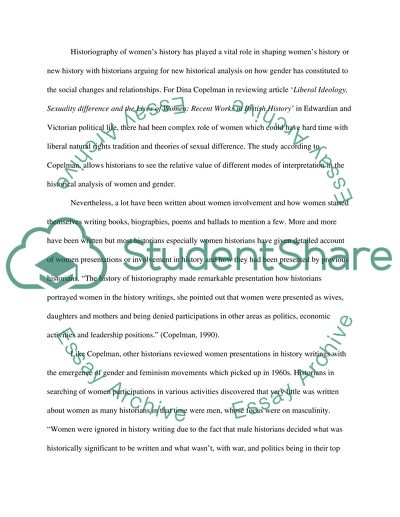Cite this document
(Historiographical Trends from the 1960s Onwards and How It Affected Term Paper, n.d.)
Historiographical Trends from the 1960s Onwards and How It Affected Term Paper. Retrieved from https://studentshare.org/history/1503294-historiographical-trends-from-the-1960s-onwards-and-how-it-affected-the-ways-in-which-historians-write-about-women-in-the-past
Historiographical Trends from the 1960s Onwards and How It Affected Term Paper. Retrieved from https://studentshare.org/history/1503294-historiographical-trends-from-the-1960s-onwards-and-how-it-affected-the-ways-in-which-historians-write-about-women-in-the-past
(Historiographical Trends from the 1960s Onwards and How It Affected Term Paper)
Historiographical Trends from the 1960s Onwards and How It Affected Term Paper. https://studentshare.org/history/1503294-historiographical-trends-from-the-1960s-onwards-and-how-it-affected-the-ways-in-which-historians-write-about-women-in-the-past.
Historiographical Trends from the 1960s Onwards and How It Affected Term Paper. https://studentshare.org/history/1503294-historiographical-trends-from-the-1960s-onwards-and-how-it-affected-the-ways-in-which-historians-write-about-women-in-the-past.
“Historiographical Trends from the 1960s Onwards and How It Affected Term Paper”, n.d. https://studentshare.org/history/1503294-historiographical-trends-from-the-1960s-onwards-and-how-it-affected-the-ways-in-which-historians-write-about-women-in-the-past.


